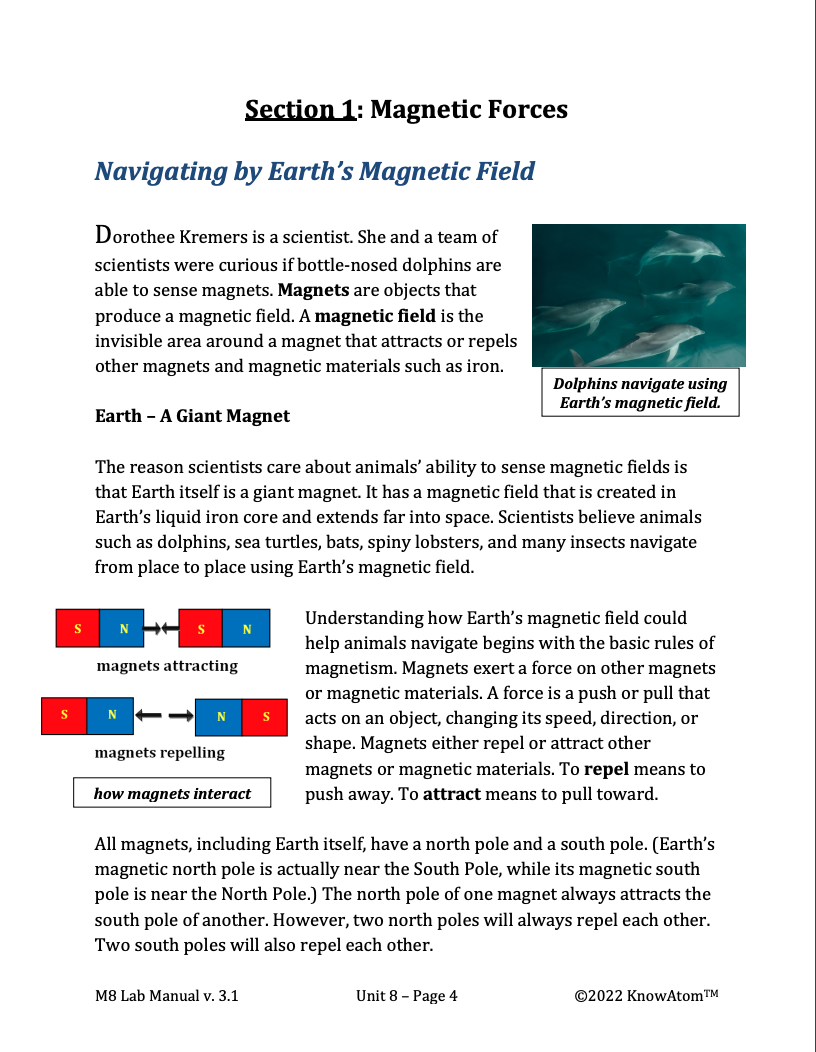
In this unit, students explore the properties of different kinds of waves and the relationship between waves and energy. In this lesson, students investigate how waves can be used to communicate and transmit information. This page highlights key components of this lesson.

In kindergarten, students explore how scientists use all of their senses to ask questions and develop hypotheses about the world around them. In this unit, students have been analyzing weather patterns and seasons as well as considering the role of the sun in heating the Earth. This page is an overview of lesson 8 in which students investigate different Earth materials often found in their school’s playground or schoolyard to observe temperature variation among different surface materials when light hits them.

Kindergarten students start to develop the practices that scientists use to gather data, make and test hypotheses, and share their findings. During this unit, students will ask questions and make observations as they explore weather patterns and investigate how the sun heats different Earth materials. This page is an extract from lesson 9 where students conduct an experiment to analyze how materials are warmed differently in the sunlight than they are in the shade.

In Kindergarten, students begin to develop practices that scientists and engineers use to gather data, make and test hypotheses, and design prototypes based on evidence to solve problems. During this lesson students will ask questions, engage in Socratic dialogue, gather evidence through experimentation, and solve problems as they explore how the sun heats different Earth materials. This page is a high-level extract from lesson 10 where students build on their understanding of the sun’s energy to heat objects by conducting an experiment to investigate how color affects heat absorption.

In this first unit, students learn to differentiate between the practices of a scientist and those of an engineer. Students ask questions, make observations, and collect data as they explore weather patterns on Earth and investigate how different Earth materials are heated by the sun. During this final lesson of the unit, students act as engineers by designing a prototype that can reduce the warming effects of the sun.

In the second unit of Kindergarten, students explore life on Earth. They begin by exploring what makes something a living thing, and then investigate what plants and animals need to survive. To begin their study of life science, students make observations and construct explanations about those observations to explore the characteristics that all living things have in common.

In Unit 2 of Kindergarten, students explore characteristics of living things and investigate what plants and animals need to survive. They will also discover plant and animal life cycles, and learn about habitats. This page is a high-level extract from lesson two, where students use patterns of shared characteristics to help them sort photos of different things into groups according to whether they are living, once-living, or nonliving.

In this Life Science unit, Kindergartners explore plants and what they need to live and grow. This page is a high-level extract of lesson four in which students make models of adult sunflower plants to explore how plants have different parts that help them get what they need to grow.

In the second unit of Kindergarten, students explore living things and discover what plants and animals need to survive. This page provides a snapshot of lesson five which has students conducting a class experiment with bean plants to observe what they need to live and grow.

In this unit, students are introduced to living things on Earth. They begin by exploring the differences between living and nonliving things and then investigate what plants and animals need to survive by watching bean plants grow and observing a cricket in its habitat. They then create a model to show how living things depend on other living things and their environment to survive, and can change their environment to help them get what they need.

In this unit, students are introduced to living things on Earth. They begin by exploring the differences between living and nonliving things and then investigate what plants and animals need to survive in their habitats. Now students take their understanding of animal habitats to then apply their understanding of the topic to consider how human shelter varies depending on where we live.

In the second unit of Kindergarten, students explore living things on Earth. They analyze the differences between living and nonliving things and then investigate what plants and animals need to live and grow. Following this, students explore human needs and activities and how those impact the planet.
Standards citation: NGSS Lead States. 2013. Next Generation Science Standards: For States, By States. Washington, DC: The National Academies Press. Neither WestEd nor the lead states and partners that developed the Next Generation Science Standards were involved in the production of this product, and do not endorse it.
